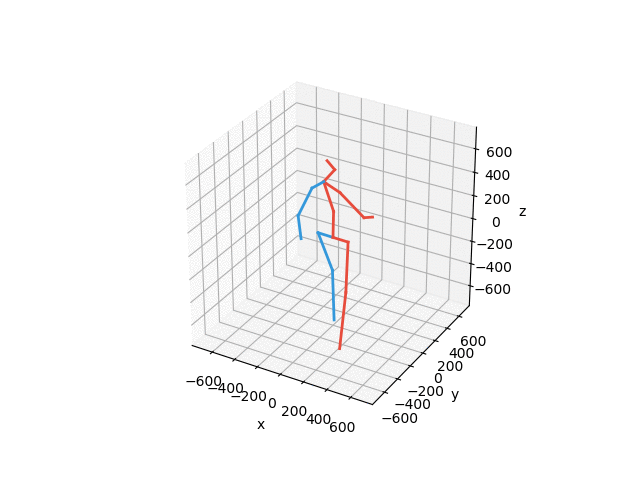This is the Pytorch implementation for the paper
Julieta Martinez, Michael J. Black, Javier Romero. On human motion prediction using recurrent neural networks. In CVPR 17.
It can be found on arxiv as well: https://arxiv.org/pdf/1705.02445.pdf
- h5py -- to save samples
- Pytorch: the code is tested on 1.0.0 with CUDA 10.0.0.
First things first, clone this repo and get the human3.6m dataset on exponential map format.
git clone https://github.com/una-dinosauria/human-motion-prediction.git
cd human-motion-prediction
mkdir data
cd data
wget http://www.cs.stanford.edu/people/ashesh/h3.6m.zip
unzip h3.6m.zip
rm h3.6m.zip
cd ..For a quick demo, you can train for a few iterations and visualize the outputs of your model.
A simple demonstration is available by running
bash demo.shFor further training and testing, you can change the command with following instruction:
To train,
python src/translate.py --action walking --seq_length_out 25 --iterations 10000To save some samples of the model,
python src/translate.py --action walking --seq_length_out 25 --iterations 10000 --sample --load 10000Finally, to visualize the samples,
python src/forward_kinematics.pyIf it works, it should produce some visualization like
To train and reproduce the results of our models, use the following commands
| model | arguments | training time (gtx 1080) | notes |
|---|---|---|---|
| Sampling-based loss (SA) | python src/translate.py --action walking --seq_length_out 25 |
45s / 1000 iters | Realistic long-term motion, loss computed over 1 second. |
| Residual (SA) | python src/translate.py --residual_velocities --action walking |
35s / 1000 iters | |
| Residual unsup. (MA) | python src/translate.py --residual_velocities --learning_rate 0.005 --omit_one_hot |
65s / 1000 iters | |
| Residual sup. (MA) | python src/translate.py --residual_velocities --learning_rate 0.005 |
65s / 1000 iters | best quantitative. |
| Untied | python src/translate.py --residual_velocities --learning_rate 0.005 --architecture basic |
70s / 1000 iters |
You can substitute the --action walking parameter for any action in
["directions", "discussion", "eating", "greeting", "phoning",
"posing", "purchases", "sitting", "sittingdown", "smoking",
"takingphoto", "waiting", "walking", "walkingdog", "walkingtogether"]
or --action all (default) to train on all actions.
If you use our code, please cite our work
@inproceedings{julieta2017motion,
title={On human motion prediction using recurrent neural networks},
author={Martinez, Julieta and Black, Michael J. and Romero, Javier},
booktitle={CVPR},
year={2017}
}
The main part of the program is based on the original TensorFlow implementation.
The pre-processed human 3.6m dataset and some of our evaluation code (specially under src/data_utils.py) was ported/adapted from SRNN by @asheshjain399.
MIT

